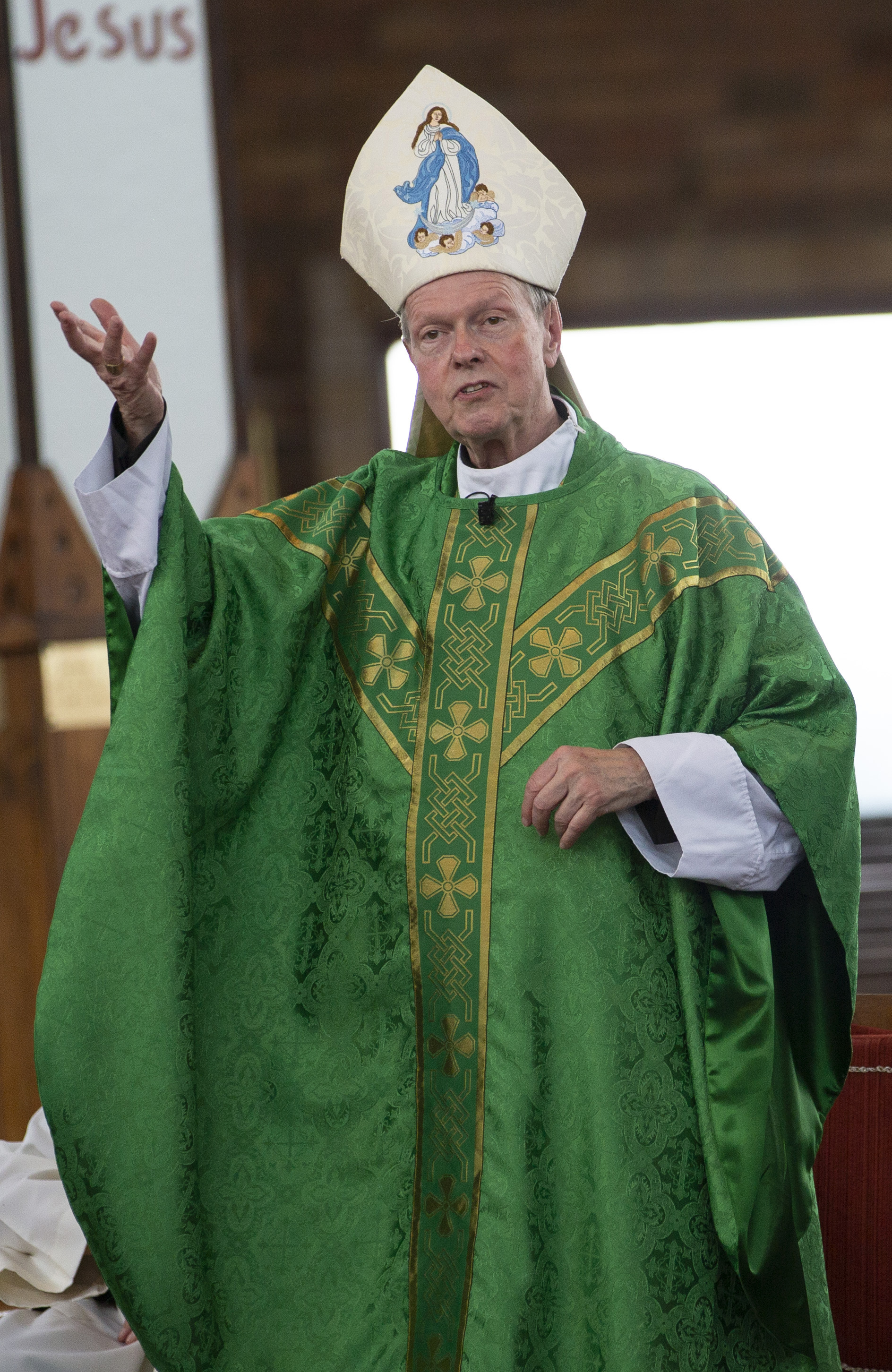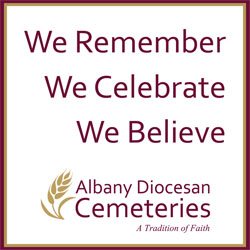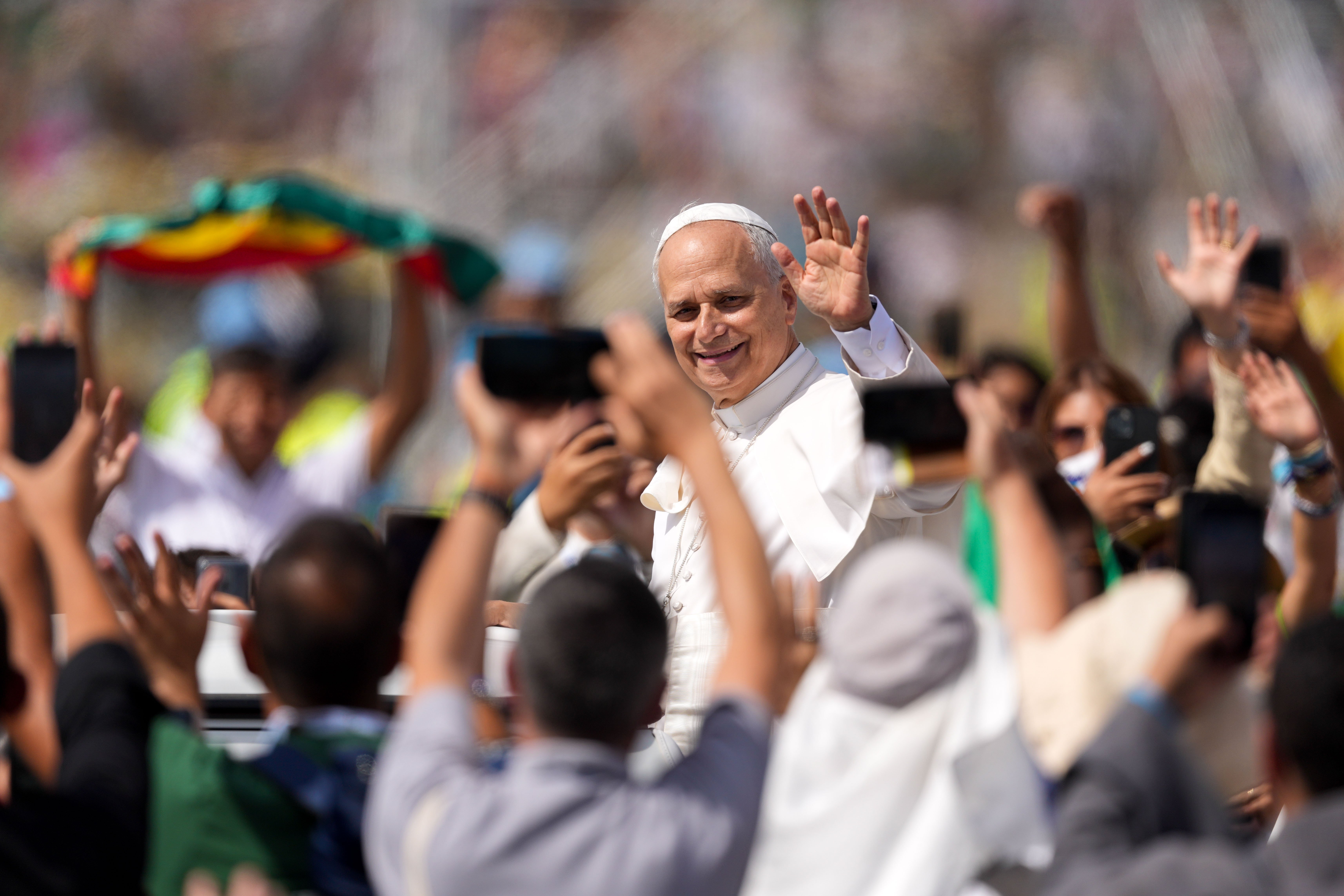March 11, 2024 at 9:46 a.m.
SYNOD IN SESSION
On a rainy night in Queensbury, dozens gathered together for the Albany Diocese’s second round of synod listening sessions.
The meeting, held on March 6 at Our Lady of the Annunciation Church, was the second listening session organized by the Diocese after Pope Francis called on the faithful to hold a new round of sessions focusing on church structure, organization, leadership and church life.
SYNOD SESSIONS
Dioceses all across the U.S. are holding new rounds of synod listening sessions, focusing on church structure, organization, leadership and church life. The Diocese of Albany has two sessions remaining (listed below). One is virtual, one is in person.
March 18: Virtual Gathering, 6:30-8:30 p.m.
March 20: St. Ambrose, 347 Old Loudon Road, Latham, N.Y., 12110, 6:30-8:30 p.m.
The Diocese is asking everyone to register for a session by using this link:
webapps.rcda.org/synod
“I just invite us to open our minds and our hearts to the grace that God will reveal to us,” said David Amico, diocesan director for the Office for Discipleship Formation.
“What I’m hearing tonight more than anything else is we need to stay connected,” said Bishop Edward B. Scharfenberger in the session’s closing prayer. “That’s what we are doing, we’re doing what God made us to do. There’s a reason we want to be a part of something larger than ourselves, we were made that way. And we find our true selves when we recognize that God put us here to find God’s presence in one another.”
The Albany Diocese held its first meeting on March 5 at St. Mary’s Church in Oneonta with a turnout of almost 50 people. Two more listening sessions are scheduled to take place: a virtual gathering on March 18, and an in-person gathering on March 20 at St. Ambrose Church in Latham. All meetings are held from 6:30-8:30 p.m.
Pope Francis initiated the worldwide Synod on Synodality in October 2021 and held the global assembly at the Vatican in October 2023, where cardinals, bishops, clergy and members of the laity discussed the findings gathered from the worldwide synod.
The United States Conference of Catholic Bishops is requesting that dioceses focus questions on the structure and format of the Catholic Church, the main focus points of Pope Francis’ call for another round of listening sessions. Catholics should discern where they have experienced success or distress within the church’s structure/leadership/life, and how that encourages or hinders the mission of the church — to spread the word of God — as well as how can the structure/organization of the church help all the baptized to respond to the call to proclaim the Gospel?
The Vatican will hold the final meeting of the synod in October of this year.
For those in Queensbury, dozens filled the parish center as parishioners and priests came out both to listen and voice their thoughts.
Table discussions started with how attendees personally felt the church has encouraged and/or hindered the mission of spreading the Gospel, and how could the church help all the baptized to understand and participate more fully in this mission.
“Our church basically needs better PR,” said Torie Wattendorf, parishioner at Sacred Heart Church in Lake George. “This church has the most incredible story to tell and we really need to get our act together.”
Other tables had also discussed how the perspective of the Catholic Church was skewed by years of scandal, but Wattendorf noted that a lot of that negative perception “was earned.”
“A lot of the things that went on, we can’t deny the fact that bad things happened and there was a lot of hurt and a lot of damage, and that needs to be acknowledged in our hearts and in our souls, and we can’t be in denial of that,” she said. “That’s something we have to take to heart and come to terms with.”
The listening session’s format is different from the style used in the first round of listening sessions. Each discussion period is followed by minutes of silent meditation, where the groups are called to sit with their thoughts before commenting or writing anything down.
After discussions, each table took to paper to write down their responses to five questions: What convergences have emerged? What obstacles or differences emerged? Did new questions or insights emerge? What areas require further study, reflection and prayer? And what steps may the Holy Spirit be inviting us to take, now or in the near future?
Johnny Stanley, a parishioner at St. Mary’s in Ballston Spa, said a few table members disagreed about why young people were leaving the church, with some voicing that the church’s adherence to old tradition pushed them away, while for others it was the very thing that brought them back.
Across the board, tables agreed that a breakdown of the family unit, a lost sense of community, and a lack of inclusion within the church has led some families astray. Others expressed a desire for community within the church, and asked how the church can work toward being a place that is both socially and spiritually fulfilling.
“We know that more dialogue is necessary; there were only three of us at our table and we could not fit any of our talking into the time we had,” laughed Father Scott VanDerveer, pastor of St. Mary’s in Glens Falls. “There’s much more to listen to, and much more to say, and we’re eager to do it.
MORE NEWS STORIES
- Pope Leo tops Gallup world leader poll, across party lines
- Green card policy change may leave immigrants seeking legal status vulnerable to deportation
- Apostolates in Minnesota archdiocese focus on missionary discipleship at historic meeting
- Legacy of Japan’s champion of medicine, faith who persevered after atomic bomb endures
- Reckoning with empire: A Catholic critique of American foreign policy in a nuclear age
- Father Lafleur: Forgotten story of chaplain to POWs in WWII and his ‘incredible selflessness’
- Antisemitism has ‘no place’ here, says St. Louis archbishop after attack
- Pope Leo’s first 100 days: Leaning into his new role
- Canada’s bishops call for ecological justice, wiping out crippling debt
- How accurate is the portrayal of Judas in ‘The Chosen?’











Comments:
You must login to comment.